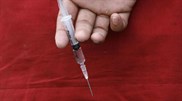Efforts to Tackle Illegal Drugs ‘Spectacular’ Failure
As we approach 2019 – the year set out by the UN a decade ago as the target date by which to “eliminate or reduce significantly and measurably” illegal drug markets – the International Drug Policy Consortium, a global coalition of 170 nongovernmental organizations working on drug policy issues, argues that this goal has been “spectacularly missed.”
23 Oct 2018As we approach 2019 – the year set out by the UN a decade ago as the target date by which to “eliminate or reduce significantly and measurably” illegal drug markets – the International Drug Policy Consortium, a global coalition of 170 nongovernmental organizations working on drug policy issues, argues that this goal has been “spectacularly missed.”
The Consortium’s report, drawing on data from government and nongovernment sources, provides a comprehensive evaluation of the 10-year UN drugs strategy and concludes by urging UN member states to conduct their own honest and thorough assessment of the strategy, something that has so far not happened.

According to UN data analyzed in the report, illegal cultivation of opium poppy and coca bush increased by 130 and 34 percent respectively between 2009 and 2018; the number of adolescents and adults who had used drugs at least once in 2016 grew by 31 percent compared to 2011; and drug-related deaths surged by 145 percent from 2011 to 2015. Meanwhile, the global drug market continues to flourish with annual turnover estimated at US$426 to US$652 billion. More than half of the gross profits from the drug trade are laundered, with law enforcement seizing less than one percent of that money.
Share this on: